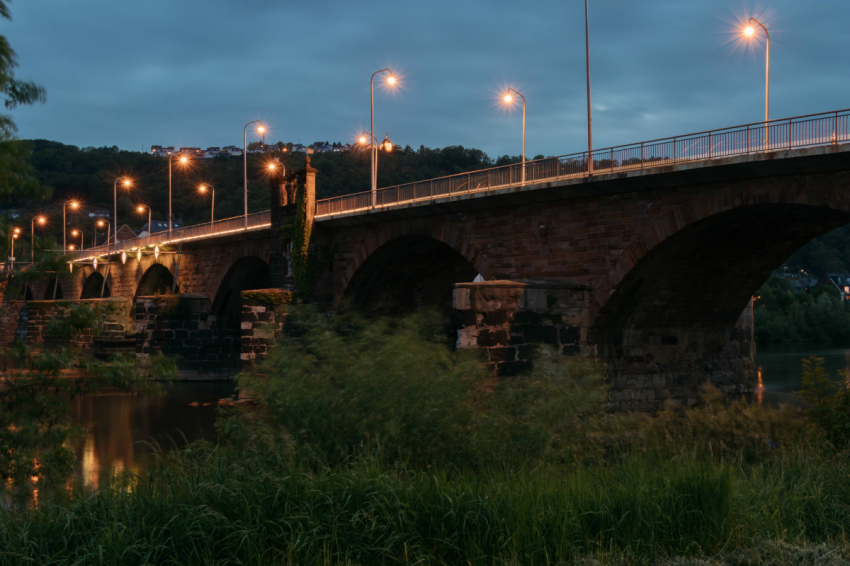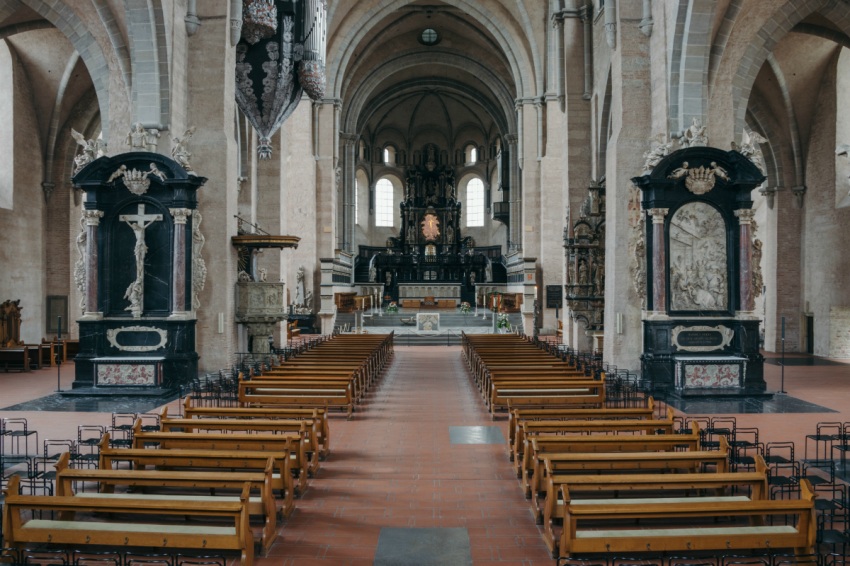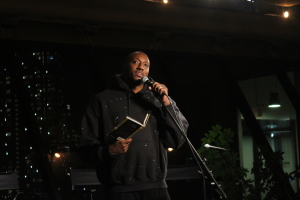48 hours in Trier: Saints, holy relics and Roman ruins

The ancient city gate is the first clue that Trier is hardly a typical German city.
Built by the Romans more than 1,840 years ago, the Black Gate (universally known by its Latin name, Porta Nigra) served not only a defensive purpose but it also regulated the flow of trade and commerce. The impressive gate only survived because a religious hermit took up residence there in the 11th century. Following his death and canonization as St. Simeon of Trier, parts of the gate were incorporated into a church, which stood more than 600 years until the time of Napoleon Bonaparte. The French general-turned-emperor had no use for the church, but his obsession with reviving the empire the Romans had presided over saved the gate from destruction. Much of what you see today is original, though a semi-circular apse at the east end is a remnant of the now-lost church.
But visitors to Trier, situated on the banks of the Moselle River in southwestern Germany near the border with Luxembourg, discover far more history and ancient sights than just a spectacular old gate.
In its heyday Trier was one of the most populated cities in the Roman Empire. As the Rome of the North it was also imperial seat from which Emperor Constantine the Great reigned. This explains why it is awash in UNESCO World Heritage Site-listed Roman ruins.
The Basilica of Constantine was Constantine’s throne room. The massive brick edifice, the interior of which was rebuilt after World War II, today houses a Lutheran church — a visible reminder of how the church filled the power vacuum in the centuries after Rome’s fall.

A stone’s throw away is the even grander High Cathedral of St. Peter, the oldest cathedral in Germany. It was first built in the 300s over the palace of Constantine’s mother, Empress (and later St.) Helena.
The cathedral is a panoply of architectural styles — the brick on north and south walls at the transepts is original to the Romans — thanks to the power and wealth of Trier’s Roman Catholic archbishops, who reigned supreme both spiritually within the church and secularly in temporal affairs. Today, the holder of the bishopric is a mere suffragan bishop.
Helena is credited with bringing several holy relics to Trier, where they remain to the present day.
Among the relics is the robe Jesus Christ is said to have worn before or during his crucifixion. While some will question the robe’s veracity there is little question of what one finds at the shrine in the Basilica Abbey of St. Matthias. The remains of St. Matthias the Apostle, which Helena had translated to Trier in the 4th century, rest in the crypt directly beneath an effigy in the nave. On the other side of town from the abbey is the Basilica of St. Paulinus, with its majestic 18th century baroque interior. The patron, St. Paulinus of Trier, a prominent 4th century defender against heresy, is entombed here.

Just as spectacular as Porta Nigra is the aptly named Roman Bridge over the Moselle River. While the deck was rebuilt as recently as the 18th century the pillars are original to the Romans in the 2nd century. Talk about a marvel of ancient engineering.
Besides the cathedral, relics and Roman ruins, the latter of which includes baths and an amphitheater, the Rheinland Museum and Cathedral Museum are also recommended. Be sure to also visit the cathedral’s visitor center for up-close views of what archaeological excavations found underneath it.
If you go
The historic center of Trier is crowded in the late morning and early afternoon with daytrip tourists from ships cruising the Moselle but feels deserted by 5 o’clock. Even the cafes facing the Main Market, a square and central gathering point since the 10th century, close much earlier than you might expect. The open-air wine bar with its local Moselle wine stays open late and is very popular with locals, presumably because of the cheap prices.
I stayed at the clean and no-frills Mondo’s Kaffeehotel. It is perfectly located across from Porta Nigra. If you wanted you could walk to and from the train station, though a taxi is advisable if you have luggage.
Speaking of trains, getting to Trier from the closest airports in Frankfurt and Luxembourg is easy using Germany’s extensive rail network.
Spires and Crosses, a travel column exclusive to The Christian Post, is published every week. Follow @dennislennox on Twitter and Instagram.



























